 Home
Gallery
Contact
Events & Projects
Projects: 2019 On
Film & TV
Archive & Links
Home
Gallery
Contact
Events & Projects
Projects: 2019 On
Film & TV
Archive & Links
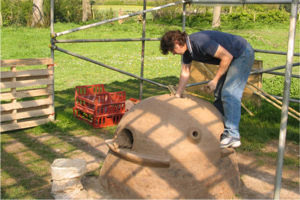
 Home
Gallery
Contact
Events & Projects
Projects: 2019 On
Film & TV
Archive & Links
Home
Gallery
Contact
Events & Projects
Projects: 2019 On
Film & TV
Archive & Links
|

|
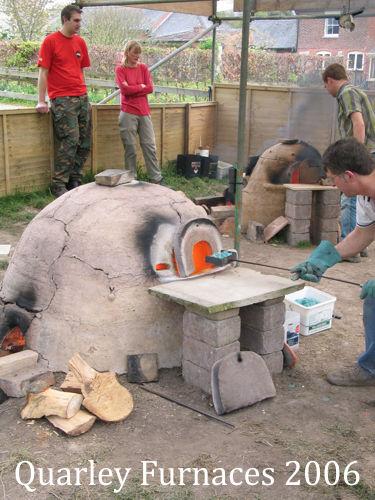
|
Events (Scrollable list) |
|
Projects
Quarley Furnace Project: Our 2005 and 2006 furnace firings. Organized by Mark and David, with Bill Gudenrath as a guest glassblower. The full archive can be accessed from this page. Results and conclusions were detailed in two articles in the Journal of Glass Studies (JGS): Taylor, M. and Hill, D. (2008) 'Experiments in the Reconstruction of Roman Wood-Fired Glassworking Furnaces' in JGS 50, pp. 249-270. Click here for article. Paynter, S. (2008) 'Experiments in the Reconstruction of Roman Wood-Fired Glassworking Furnaces: Waste Products and their Formation Processes' in JGS 50, pp. 271-290. Click here for article. The furnaces have been left fully exposed to the weathering processes and are being photographed to record their deterioration. See this page for the photos. 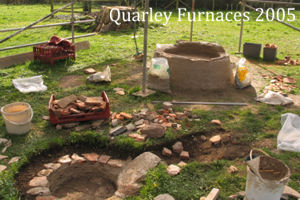
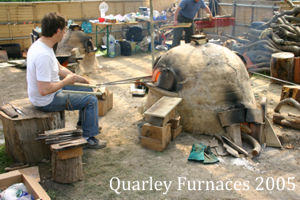
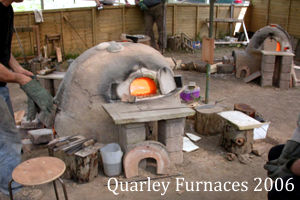
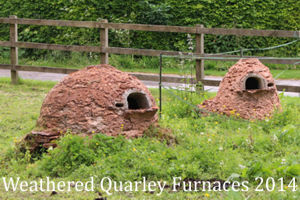
The Quarley Furnaces Velzeke Furnace Project: Begun in 2008 and continued in early September each year. Organized by Kurt Braekman (Director - PAM Velzeke) and Peter van der Plaetzen (PAM Velzeke). Glassblowers include Mark and David, Bill Gudenrath, François Arnaud, Torsten Rötzsch, Ben Dombey, Mariken Dumon and Jason Klein. See the Glasrepliken website. 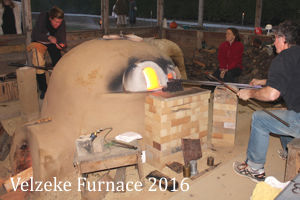
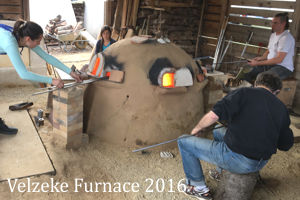
The Velzeke Furnace Core-formed Alabastron Project: In 2008 and 2009 we worked for two months with a PhD student on researching and developing the techniques of making 5th century core-formed alabastra. The practical work has been published in: Liardet, F. (2011) 'The role of craft practice in changing glass working traditions: the formation of glass vessels in the Classical and Hellenistic Mediterranean world' Cardiff University PhD thesis. 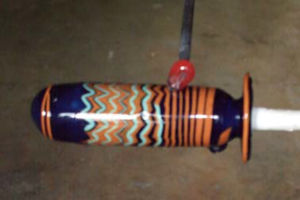
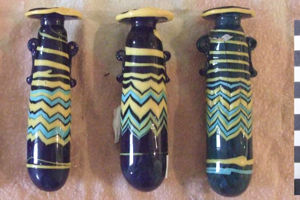
Core-formed Alabastra Late Roman Gold Sandwich Glass Project: In 2009 we worked for one month with a PhD student on researching and developing the techniques of making Late Roman Gold Sandwich Glass. The practical work has been published in: Howells, D. T. (2015) 'A Catalogue of the Late Antique Gold Glass in the British Museum' British Museum Research Publication 198. 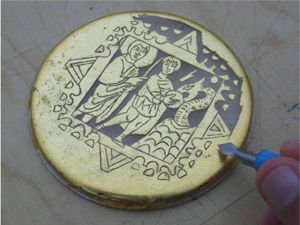
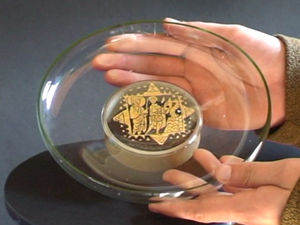
Late Roman Gold Sandwich Glass Borg Furnace Project: Begun in 2013 and continuing once or twice a year. Situated at the Villa Borg in Germany and organized by Bettina Birkenhagen (Director - Villa Borg) and Frank Wiesenberg. Glassblowers include Mark and David, François Arnaud, Torsten Rötzsch, Bill Gudenrath and Jason Klein. See the Archeoglas, Glasofenexperiment and Glasrepliken websites. Links to published articles involving the Villa Borg Furnace are on these websites. 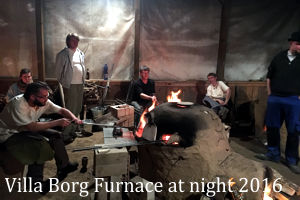
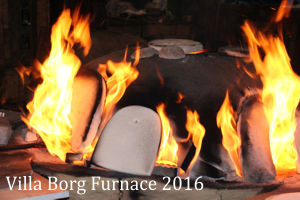
The Villa Borg Furnace Amarna Fish Project: In 2013 we were commissioned by the BBC to make a replica of the Amarna Fish for the ‘Treasures Of Ancient Egypt’ programme, hosted by Alistair Sook. This led to one month’s work involving the melting of glass compositions in use during the Bronze Age in Egypt and practise of the techniques necessary to make core-formed vessels of the period, culminating in the Fish. 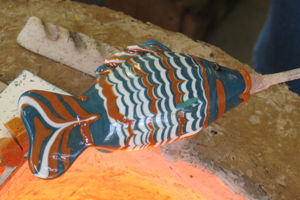
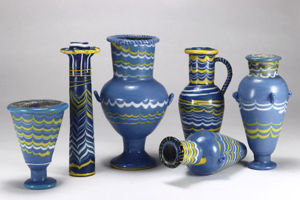
Our Amarna Fish and other core-formed glass Gold Band Glass Project: In May 2016 we worked with an Italian PhD student to investigate the techniques used for making gold band glass vessels. Using the Villa Borg facilities we worked on reproducing Hellenistic gold band glass alabastra as well as doing some preliminary work on early Roman small gold band glass bottles and pyxides (small cylindrical lidded pots). We continued this work in June 2016, making good advances in pyxis lid and body-forming techniques as well as achieving some encouraging results in making gold-band glass bottles (a blend of non-blowing and blowing techniques). The techniques used in making these bottles put these vessels at the very beginning of glassblowing, along with other small mosaic and monochrome bottles. N.B. They are likely to be later than the blown glass and glass waste found in the Jerusalem pit and dated c.60BCE. We see the Jerusalem glass as a separate event and not necessarily connected to later glassblowing. 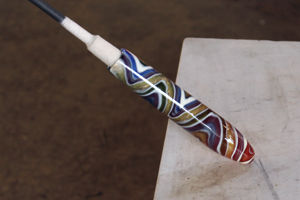
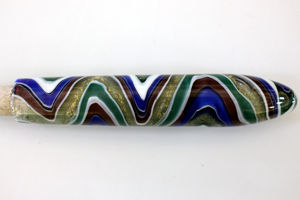
One of our Alabastra made in May 2016 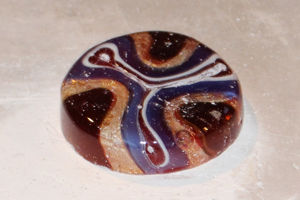
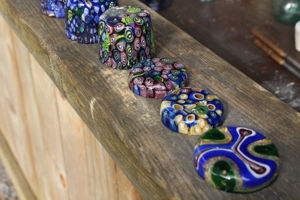
Work on Pyxides in June 2016 Blown Mosaic Glass: Following our 2015 experiments in making blown mosaic glass at the request of a glass specialist, and to further aid her research, we blew several more small bowls in May 2016 at the Villa Borg. Following annealing, they were immediately sliced into sections for her to examine and to compare them to originals. 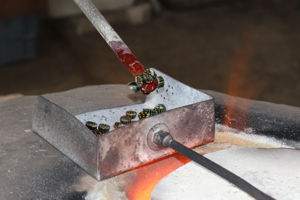
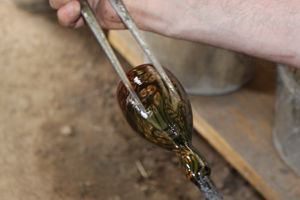
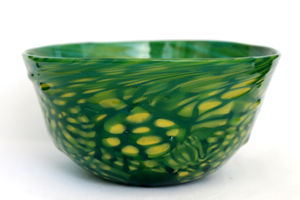
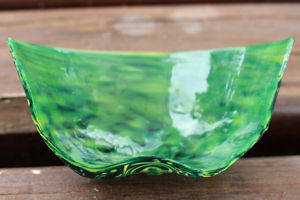
Blown Mosaic Bowls in May 2016 Non-blown multi-ribbed Bowls: The ribs on these bowls were clearly not pinched in the same way as the Roman bowls with fewer, larger, more stately ribs. A series of short experiments at the Villa Borg in June 2017, using various tools, quickly showed that a long, thin bar of metal (a knife!) produced the best results. The photo shows us using a builders trowel. This was not as controllable as a knife, but had to be used in the absence of a suitable long-bladed knife. 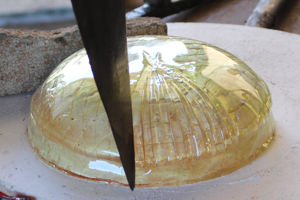
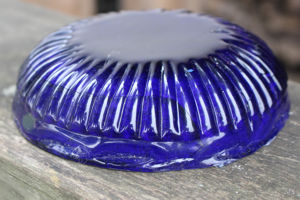
Making Multi-ribbed Bowls in June 2017 Blown Mosaic Glass: In 2019 we revisited blown mosaic glass and blew two or three more small bowls in June 2019 at the Villa Borg for the same glass specialist. Following annealing, we sliced one bowl into sections for her to examine and to compare them to originals. 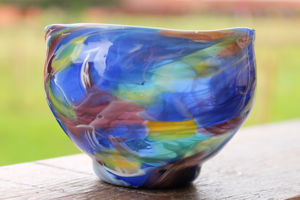
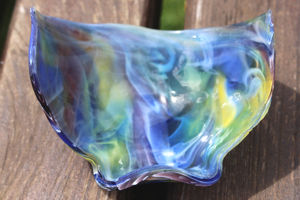
A Blown Mosaic bowl in June 2019 Our wood-fired furnace projects continue on this page PDF FilesSummaries of some Medieval and Post-medieval Vessel Types:
Relating to 18th century Glass:
Relating to Roman Glass:
Our wood-fired furnace projects continue on this page |
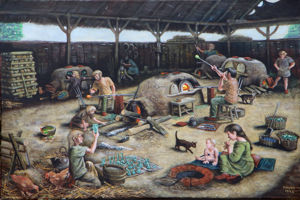
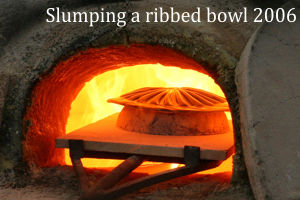
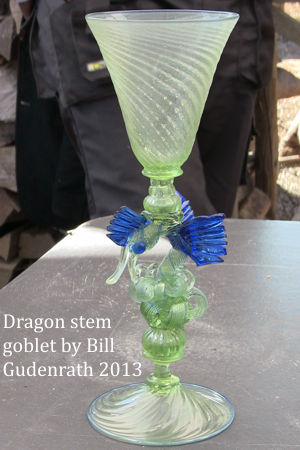
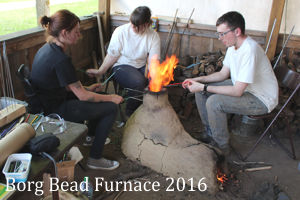
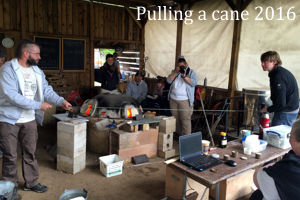
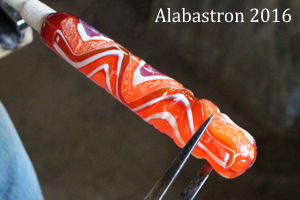
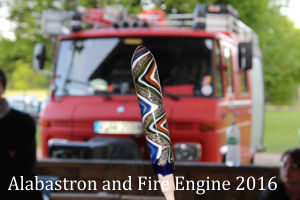
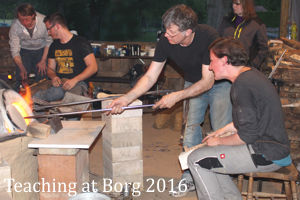
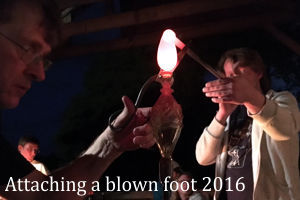
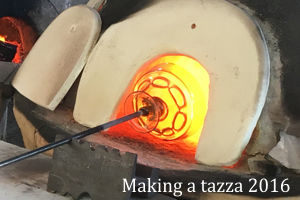
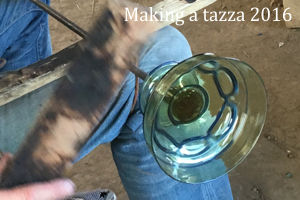
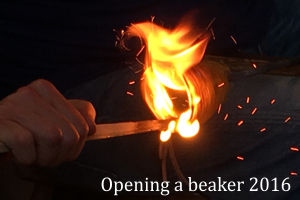
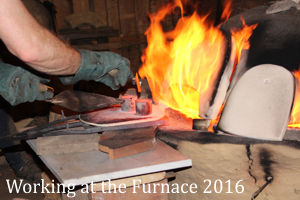
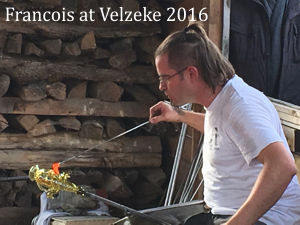
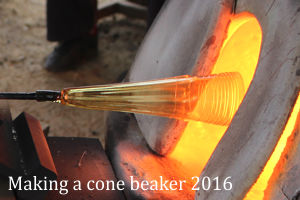
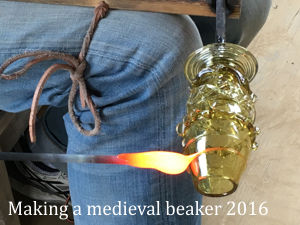
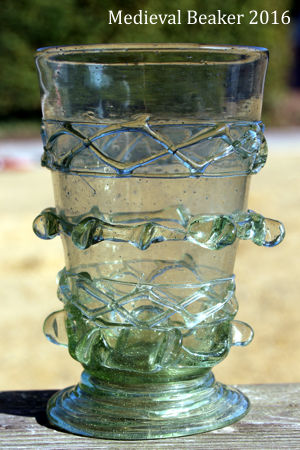
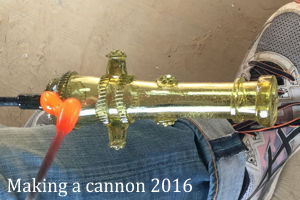
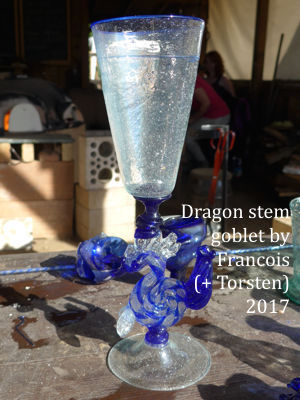
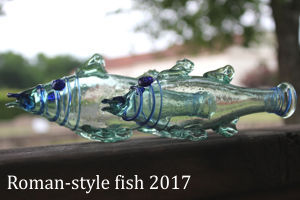
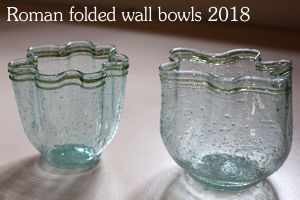
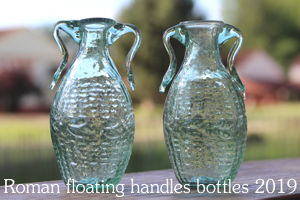
|
Home Gallery Contact Events & Projects Projects: 2019 Onwards Film & TV Archive & Links